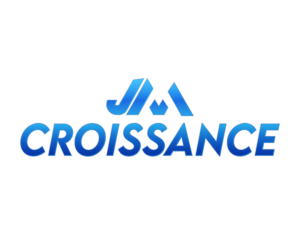The three-way match principle is a well-known concept used as a control protocol in the Account payable/procurement accounting. The main purpose of this process is to reconcile a supplier’s payment with three documents generated at the main stages of the procurement process:
- The Purchase Order – The PO is raised to confirm the details of the orders, it is raised to a supplier after the internal decision to buy completed. A PO is also a revocable/non-revocable commitment to buy and display some of the key details of the order: the product or service specification, quantity, price and the general purchase agreement regarding payment terms and delivery condition.
- The invoice – This is the formal payment requisition from the supplier after the provision of the product or the service ordered. It must reference the PO number and the specified order expectations
- Good Receive Note/packing list/bill of lading: Once the product/service is delivered one of these documents serve as an acknowledgement of reception and should refer both the invoice and the PO.
The three-way match accounting/control is simply making sure that the three documents above talk to each other before raising a partial or a full payment to a supplier.
“Similar to Blockchain, the three watch maintain a traceability across the procurement process; each step referencing the previous one”
The three-way match is an auditable and a fundamental control requirement of any procurement/account payable process. In addition to the improved traceability and documentation, it helps in the detection of fraudulent invoices, reduce the risk of duplicate billing and payments and of course improves the business relationship between customers and suppliers. In addition to the above characteristics, the three-way match process also improves the accuracy of financial information
Accuracy! That’s the link with business valuation.
Accuracy is a skyline for business valuator because the same set of financial information can generate different reliable value within a certain scale with differing assumptions. That being said, I would like to stress here that Business valuation is an extremely rigorous exercise, a perfect blend of Art (75%) and Science (25%). Even though subjectivity and professional judgement carry an important weight in the outcome, the accuracy is and remain the most important objective of the exercise
In the practice a misstatement or negligent business valuation might have important fiscal, legal, financial and courtroom damaging impacts, both to the client and the valuator. As a matter of consequence, The CICBV standards require a trained CBV to follow some steps in order to meet the minimum standard of professional performance. That requirement has some similarities with the three-way match accounting.
- Primary valuation approaches:
At this stage the valuator will theoretically determine the intrinsic value/Standalone value of the subject company in a notional market using capitalization (cash flow/income or EBIDA etc..), DCF techniques after the appropriate adjustments and formulation of a set of assumptions.
- Secondary valuation approaches:
Chartered Business Valuator use secondary valuation approaches to test the valuation conclusion derived from the primary approach or to assess the risks inherent to the value determined. Most often the subject company relevant variables (EBITDA, Income, revenues etc..) multiples are compared with the open market prevailing or historical transactions after comparability analysis and appropriate adjustments. Some of the approaches that can also be listed here include: Asset based valuation on a going concern contest, the Adjusted Present value, the Dual capitalization of earnings/cash flows and the rules of thumb based on valuator knowledge and experience with the subject industry.
- Third Valuation approaches
This step is mostly a reasonableness and a risk assessment exercise where the goodwill (intangible) is compared with the Tangible asset backing proportion to the determined value. CBV also evaluates the payback of the goodwill using relevant measures of the subject company (Cash flow, EBITDA, Income)
Although, this step is more a reasonableness testing and risk evaluation exercise, it is similar to the third step of the accounting three-way match where the good received note is compared with the PO and the invoice. Any discrepancy between the three documents will trigger an in-depth investigation of the transaction and eventually the cancellation of the payment to the supplier.
Similarly, the reasonableness testing of the goodwill versus Tangible asset backing is done in conjunction with the assumptions stated at the beginning of the valuation exercise, unrealistic indication will trigger a backward revision of the previous approaches till the reassessment of the facts/data and potentially the re-statement of assumptions.
As a matter of consequence, we can conclude that the three-watch carries the same importance and rigor for business valuation albeit for different objectives
As a passionate student to the CBV program I am advocating for the conceptualization of the three-way match valuation approach in the business valuation literature
Dear reader, what is your opinion? Please drop your comments below
